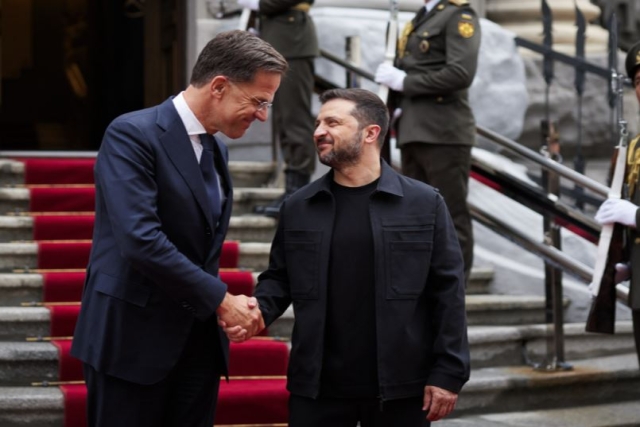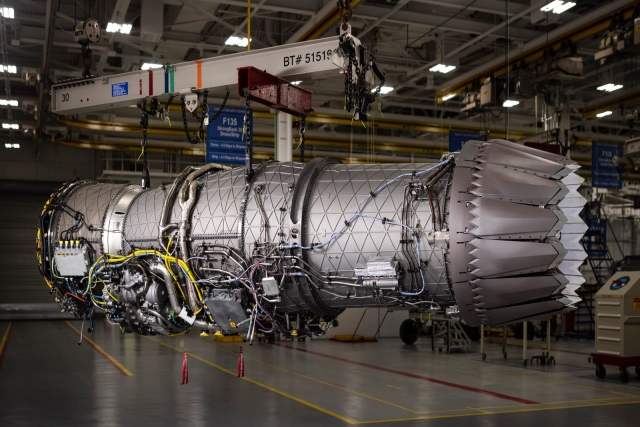South Korea’s KF-X to Challenge Fighter jets from Boeing, Dassault and Russia
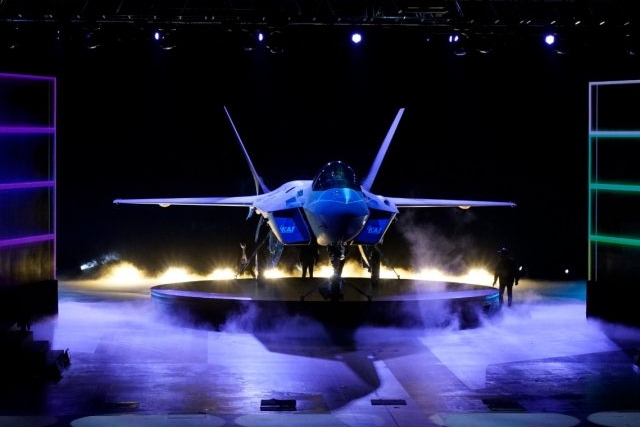
KF-X jet (DAPA image)
The KF-X fighter jet rolled-out by South Korea’s Korea Aerospace Industries (KAI) could challenge the best of 4.5 generation jets represented by Dassault Rafale, Boeing F/A-18, F-15EX Eagle II besides the Russian Su-35.
In addition, its expected lower sticker price (compared to the Western jets) should make it attractive to potential customers of fighters -in-development such as Turkish TF-X, the Indian Light Combat Aircraft (LCA) and the Pakistani-Chinese JF-17 Block III.
On April 9, South Korea’s Korea Aerospace Industries (KAI) drew the curtains to unveil its first home-grown supersonic fighter jet prototype, the KF-X (designated KF-21 and nicknamed Boramae or “young hawk trained for hunting.”
While the KF-21 is still a year away from its first flight and will likely join the country’s Air Force by the middle of the current decade, it has already found its first international customer- Indonesia. The South-East-Asian country will licence-manufacture some 50 aircraft and receive technology to help assemble the aircraft. Indonesia has reportedly paid just $165 million since it joined the program in July 2014 – while it agreed to contribute 20% of the 8.8 trillion won ($7.9 billion) project cost.
However, Indonesian Defense minister Prabowo Subianto who was present at the roll-out ceremony reportedly gave the go-ahead for “negotiations at the working-level," to find a way for Jakarta to fly back into the project. Some reports said Indonesia’s proposals include a combination of barter trade and reduced cash which makes for its up-front contribution.
What sets the KF-21 apart from other in-progress aircraft is South Korea’s formidable reputation for success in the design, development and export of defense equipment. The Republic of Korea (ROK) defense sector has become a prominent exporter of aerospace, land, and naval equipment and is second only to China as an emerging arms exporter.
The KAI which is building the KF-21 jet with support from the Defense Acquisition Program Administration (DAPA) and several ROK defence technology firms, has the experience of over a decade in developing its T-50 advanced jet trainer and the FA-50 light fighter jet. Its export successes are worth mentioning; Indonesia and Thailand have ordered The Training/Fighter variant of the T-50 while a deal with Argentina to sell the more advanced FA-50 had to be scuttled due the U.K. denying export licence for some British-made components.
Impressive technologies:
For a first time effort to create a 4.5 generation fighter jet, the technologies amassed by KAI is truly impressive.
Hong Yoon-seong, the lead Hanwha Systems developer in charge of the AESA radar being developed for the KF-X project had said in a 2020 interview published in the Korean media that the KF-X AESA radar will have around 1,200-1,300 Transmitter-Receiver Module (TRM) modules. (F-22's radar has 2,000 and F-35's radar has 1,200).
The KF-X AESA radar is expected to perform better than AN/APG-83 being installed on Korean KF-16V, which is similar to the F-16V, the most recent version of the F-16 jet.
Hanwha Systems developed the radar’s antenna and power supply, which were then integrated and tested with ELTA Systems (Israel) signal processor. By November 2019, 10 overseas and 6 domestic aerial testing sorties had been carried out. These tests proved that the HW works as intended.
For the KF-X project, Hanwha Systems is also developing the Electro-Optical Targeting Pod and the Infrared Searcher and Tracker (IRST) which searches and tracks antiaircraft target and provides the azimuth, high angle, and infrared image information of the enemy airplane or anti-aircraft missile.
Heavy weapons payload
The KF-X takes design cues from the U.S. F-22, a stealth aircraft, but lacks an internal weapons bay that is a must-have for a stealth fighter. It carries weapons and fuel pods externally rather than in an internal carriage. From the stealth-friendly shape of the KF-21, it can be surmised that a fifth generation fighter could be a future upgrade. That the KAI designers have gone in a twin engine configuration indicates an intention to create a heavy fighter with weapons payload similar to the F-15 or Dassault Rafale.
The other birds of this flock that just lack stealth capability and are powered by two engines include Boeing F/A-18 Super Hornet, Boeing F-15EX Eagle II, Dassault Rafale and Sukhoi Su-35.
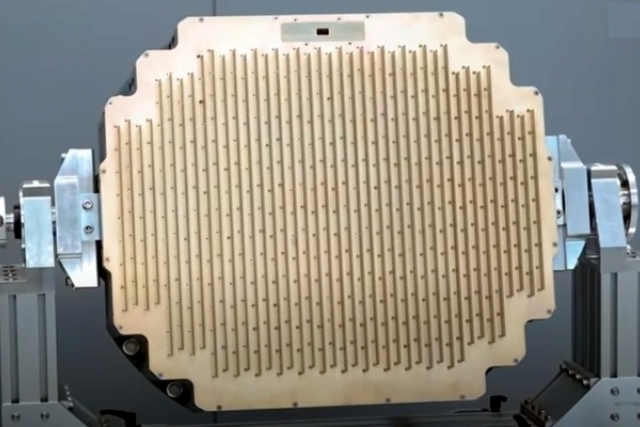
|
Feature |
KF-X |
F/A-18 Super Hornet |
F-15EX Eagle II |
Rafale |
Su-35 |
|
Crew |
1 or 2 |
1 or 2 |
2 |
1 or 2 |
1 |
|
Speed |
Mach 1.8 |
Mach 1.8 |
Mach 2.5 |
Mach 1.8 |
Mach 2.3 |
|
Empty Weight |
11,800 kg |
14,552 kg |
14,500 kg |
C variant: 9,850kg
|
19,000 kg |
|
Combat Range |
- |
1,600 km |
- |
1,850 km |
1,600 km |
|
Ferry Range: |
- |
4,500 km |
- |
3,700 km |
4,500 km |
|
Max Take-off Weight |
25,400 kg |
29,937 kg |
37,000 kg |
24,500 kg |
34,500 kg |
|
Engine |
2 × Hanwha Techwin General Electric F414-KI |
2 x F414-GE-400 |
2x F110-GE-129 |
2x Snecma M88 |
2 x AL-41F-1S modular two-shaft turbofan engine |
|
Engine Thurst |
2 × 5,800kgf |
2x 9900 kgf |
2 × 13,100 kgf |
2x 7700 kgf |
2x 8800 kgf |
|
Service Ceiling |
- |
15,000+ m |
|
15,800 m |
18,000 m |
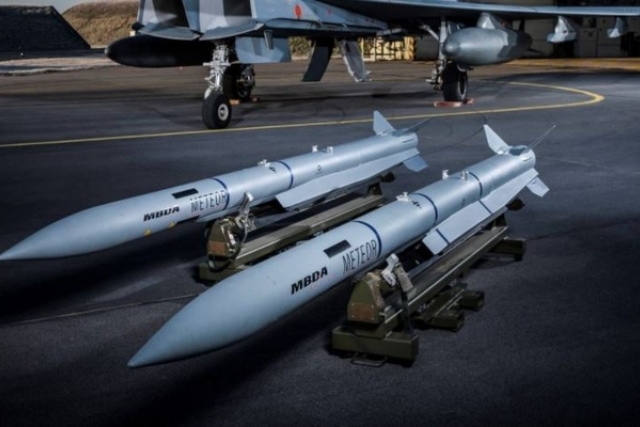
Radar and EW systems:
|
Radar |
Hanwha AESA radar |
Raytheon AN/APG-79 radar |
APG-82(V)1 AESA radar |
Thales RBE2-AA AESA radar |
Irbis-E passive electronically scanned array radar |
|
Avionics |
Hanwha ISRT system and E/O Targeting System, LIG Nex1 Datalink capabilities, Radio Frequency Jammer by LIG Nex1 ALQ-200K, Hanwha mission computer (MC) and multi-function display (MFD) LiG Nex1 flight control computer (FLCC) and communication/navigation/identification system (CNI) |
Hughes APG-73 or Raytheon APG-79 radar, Northrop Grumman/ITT ALQ-165 self-protection jammer system or BAE AN/ALE-214 integrated defensive electronic countermeasures system, Raytheon AN/ALE-50 or BAE Systems AN/ALE-55 towed decoy, Raytheon AN/ALR-67(V)3 radar warning receiver MIDS LVT or MIDS JTRS datalink transceiver |
BAE Systems Eagle Passive Active Warning Survivability System (EPAWSS) EW and threat identification system |
SPECTRA EW system, SAGEM-OSF Optronique Secteur Frontal ISRT system |
OLS-35 IRST system, L175M Khibiny-M electronic countermeasures system |
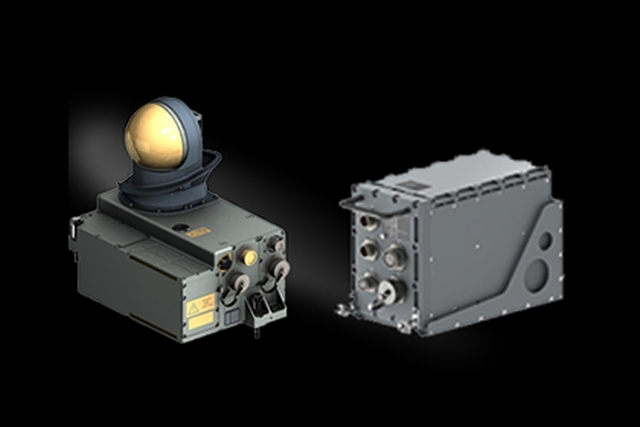
Electronic Warfare (EW):
South Korea’s LIG Nex1 told Janes in March 2021 that it has delivered Electronic Warfare self-protection system (EWSPS) for the KF-X jet. The internal KFX EW suite was developed under a $101 million contract signed in October 2016. It is expected to enter series production following a series of trials and evaluations. The EW self-protection jammer is designed to detect, analyse, and jam signals from enemy radars and/or incoming missiles. The suite will also be integrated with countermeasures and decoys on the KF-X, including chaffs and flares.
The KF-21 want to be in the league of the big boys as far as EW is concerned but still may have some distance to cover given that the competition has forged ahead considerably.
The latest jet to join the U.S. Air Force’s fighter fleet, the F-15EX Eagle II jet, comes with a Passive Active Warning and Survivability System (EPAWSS) developed by BAE Systems. The service wants to add “cognitive electronic warfare” capabilities to the F-15.
Cognitive electronic warfare aims to use artificial intelligence and machine learning to quickly and automatically identify new signals. In the future, an aircraft’s onboard computer might even be able to rapidly come up with a countermeasure.
Jointly developed by Thales and MBDA, the Rafale’s SPECTRA internal EW system carries out long-range detection, identification and localisation of threats, allowing the pilot to instantly select the most effective defensive measures based on combinations of radar jamming, infrared or radar decoying and evasive manoeuvres.
Russian Su-35 jet comes armed with the latest Khibiny EW complex that “blinds” enemy radars and satellites. Normally, these Khibiny complexes are mounted on the wingtips of advanced Sukhoi platforms: Su-35S fighters, Su-34 bombers and Su-30SM fighters. On one wing-tip, the Khibiny system acts as a receiver to determine enemy radio and communications frequencies, while the second generates the jamming element. The system is automated and analyzes enemy signals before determining the best means of jamming.
Conclusion
The KF-21 as complete package is as modern as a 4.5 generation jet can get. Its development cost for 200 aircraft, in the region of $50 million each, should enable KAI to price the jet competitively vis-à-vis the Dassault Rafale, or the F-16V both of which have tasted commercial success in recent years. Once the KF-21 is seen flying with the South Korean or Indonesian Air Forces, it should be of interest to countries seeking replacements for older generation fighter jets.


